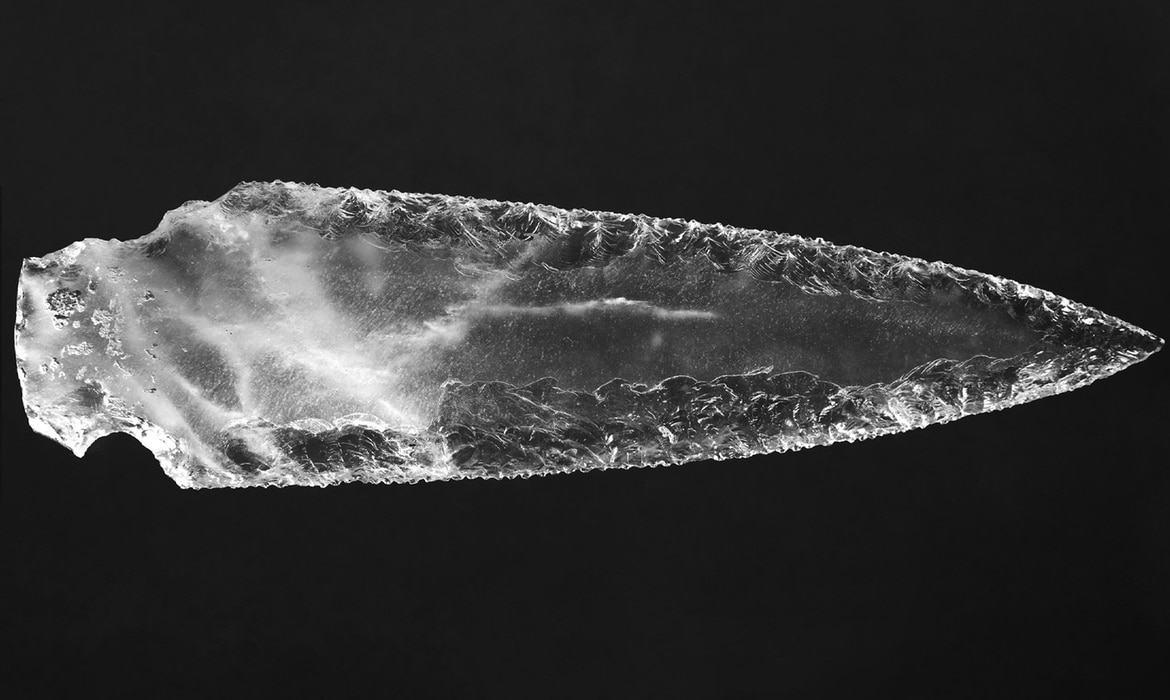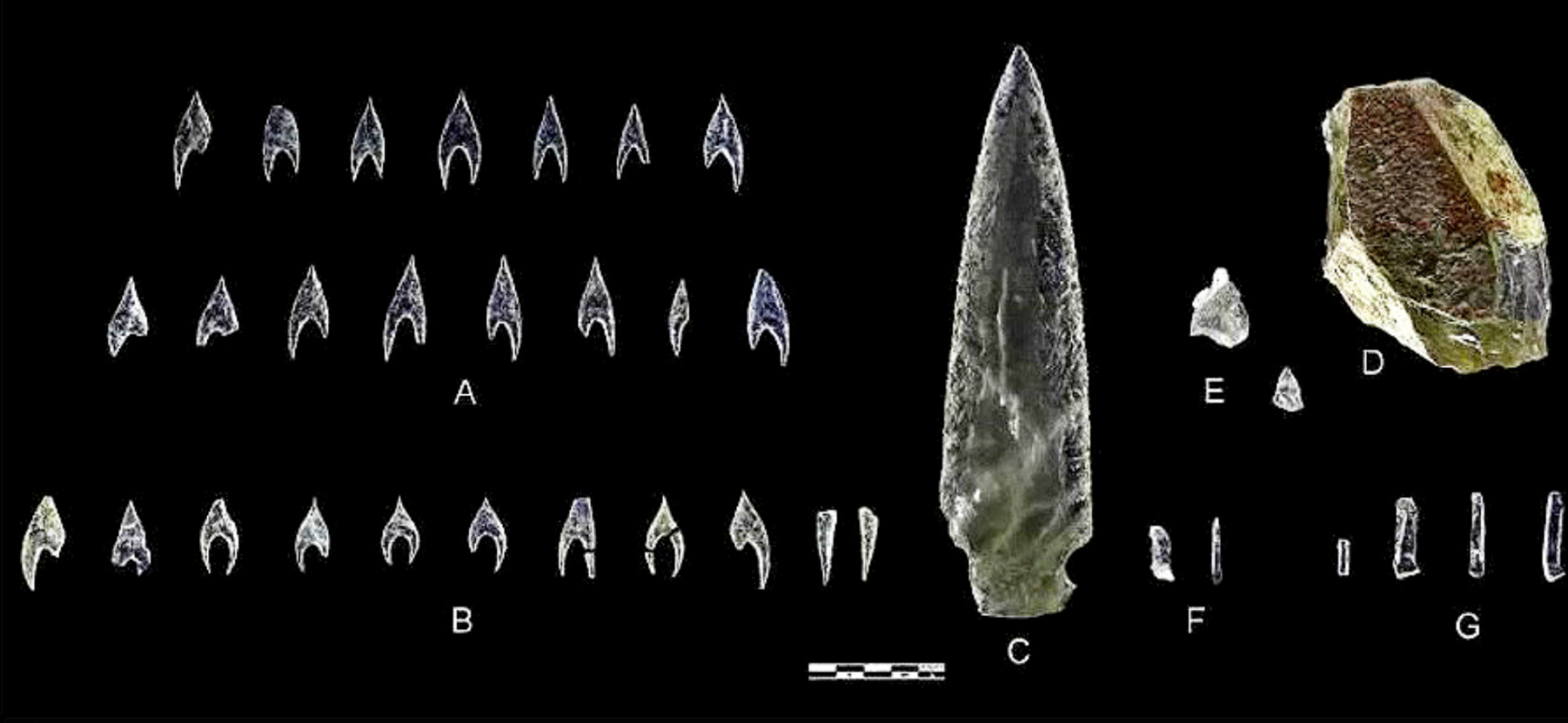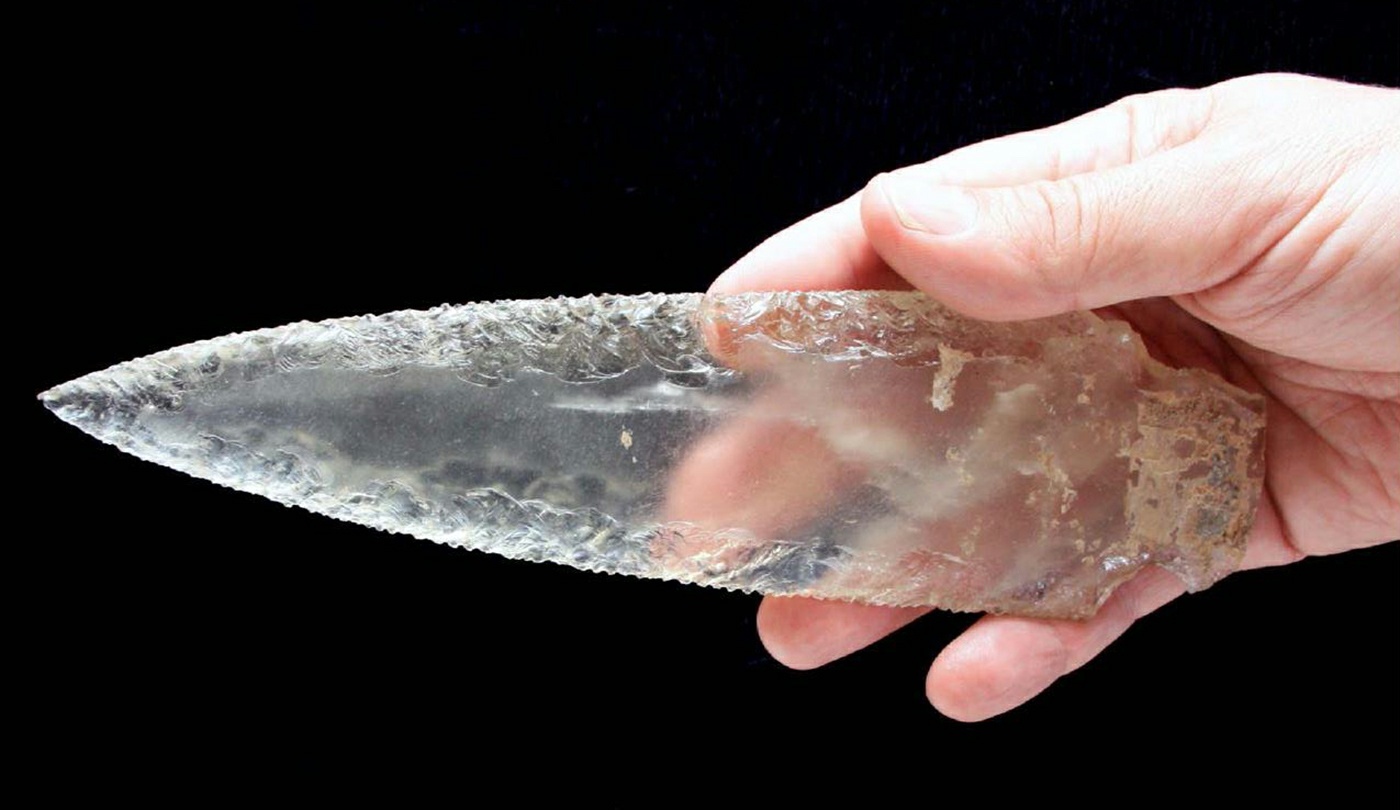Archaeologists have discovered numerous tools from prehistoric civilizations throughout history. The majority of them are constructed of stone, but a group of researchers in Spain discovered amazing rock crystal weaponry. One of the most impressive crystal daggers, which dates to at least 3,000 BC, shows the extraordinary skill of whoever carved it.

The amazing discovery was made in the Montelirio tholos, a megalithic tomb in southern Spain. This massive site is made up of enormous slate slabs and is around 50 metres in length. The site was excavated between 2007 and 2010, and a study on crystal tools was released five years later by academics from the University of Granada, the University of Seville, and the Spanish Higher Council for Scientific Research. They discovered 25 arrowheads and blades in addition to the dagger.
Rock crystal is widespread in late prehistoric Iberian sites, according to the study, although it is rarely examined in depth. To comprehend the function of these unique weapons, we must first examine the circumstances in which they were discovered.
The findings of the tholos of Montelirio?

Within the Montelirio tholos, the bones of at least 25 people were discovered. According to previous investigations, at least one male and many women perished as a result of poisoning. The women’s remains were arranged in a circular pattern in a room close to the bones of the group’s possible leader.
Many funerary items were also found in the graves, including “shrouds or garments fashioned from tens of thousands of beads pierced and adorned with amber beads,” ivory artifacts, and gold leaf pieces. Because the crystal arrowheads were discovered together, experts believe they may have been part of a ritual offering. A funeral trousseau was also discovered, which contained elephant tusks, jewellery, utensils, and an ostrich egg.
A sacred dagger?

And what about the crystal dagger? “Along with an ivory hilt and scabbard,” it was discovered alone in a different compartment. The 8.5-inch-long dagger is shaped similarly to other daggers from the historical period (the difference, of course, is that those daggers were made of flint and this one is crystal).
The crystal, according to the experts, would have held significant symbolic value at the time. High society people used this stone to gain vigour or, according to legend, magical abilities. As a result, this crystal dagger may have been utilised in a variety of ceremonies. The wrist of this weapon is ivory. This, according to specialists, is yet more proof that this crystal dagger belonged to the ruling class of the period.
Great skill in craftsmanship

The finishing on this crystal dagger indicate that it was produced by craftsmen who were skilled in their work. Researchers consider it to be the “most technically advanced” artifact ever unearthed in Iberia’s past, and carving it would have taken great expertise.
The crystal dagger’s size implies it was created from a single block of glass about 20 cm long and 5 cm thick, according to experts. Pressure carving was used to create the 16 arrowheads, which involves removing the thin scales along the stone’s edge. This resembles flint arrowheads in appearance, however researchers point out that forging such crystal objects requires more skill.
The meaning of crystal weapons
The materials for these creations had to be acquired from afar because there were no crystal mines nearby. This lends credence to the theory that they were designed for a select few who could afford the luxury of collecting and transforming such materials into weapons. It’s also worth noting that none of the weapons appear to have belonged to a single person; instead, everything suggests that they were intended for group usage.
The researchers explain, “They presumably reflect funeral regalia that was exclusively accessible to the elite of this historical period.” “The rock crystal, on the other hand, must’ve had a symbolic purpose as a raw material with particular meanings and implications. In the literature, there are examples of cultures where rock crystal and quartz are utilised as raw materials to represent life, magical abilities, and ancestors’ connection,” stated the researchers.
Although we don’t know for sure what these weapons were used for, their discovery and research provide a fascinating glimpse into the prehistoric societies that inhabited the Earth more than 5,000 years ago.




